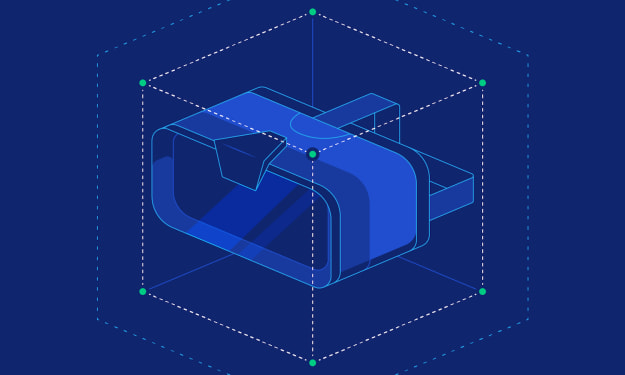Effects of Two Different Inter Repetition Rest Periods on Maximal Strength in the Back Squat
Utilizing brief rest intervals between sets can improve repetition performance while reducing the fatigue brought on by using conventional set patterns

Introduction
With cluster training, there are only a few seconds between each repetition (Haff et al., 2003; Tufano, Brown & Haff, 2017). These pre-planned breaks often last 15 to 45 seconds (Haff, Burgess & Stone, 2008). Utilizing brief rest intervals between sets can improve repetition performance while reducing the fatigue brought on by using conventional set patterns (Tufano, Halaj, Kampmiller, Novosad, & Buzgo, 2018). Movement speed and power production are reduced more during conventional sets than during cluster set configurations (Tufano et al., 2018). This is intriguing and supports using cluster set protocols while looking for power development modifications. It has been suggested that traditional sets increase the production of lactate and lactic acid because there is a greater demand for the use of muscle glycogen, whereas rest intervals of 15 to 30 seconds between repetitions in a set allow for partial replenishment of phosphocreatine (PCr) stores and adenosine triphosphate (ATP) (Haff et al., 2003). Furthermore, the amount of force-generating capacity significantly declines as lactate concentration rises (Sahlin & Ren, 1989). The authors contend that adding more rest intervals to a set results in a positive increase in maximal force production. This supports the usage of pre-planned break periods during a set when aiming to increase strength and power. According to certain research, cluster set training may be particularly useful for enhancing explosiveness and ballistic techniques, such as those used in weightlifting (Lawton, Cronin, & Lindsell, 2006). This is further supported by recent studies, as the majority of workouts examined during cluster protocols have been weightlifting movements (Haff et al., 2008).
Use of cluster sets
According to Rooney, Herbert, and Balnave (1994), the use of cluster sets does lessen fatigue but does not increase strength to the same extent as conventional set designs. This is predicated on the idea that performing traditional sets causes greater high threshold motor unit activation, which in turn causes metabolic fatigue, which triggers adaptations for building strength (Lawton et al., 2006; Rooney et al., 1994). Research have claimed that cluster set training does not result in long-term strength gains, although few of these studies have included sufficient training data to support this claim. It has long been believed that exhaustion is crucial for the development of muscle strength (Krieger, 2009). However, in order to achieve maximal strength, training to failure is not thought to be an essential method (Drinkwater et al., 2007; Folland, Irish, Roberts, Tarr, & Jones, 2002). Studies indicate that cluster set training, as opposed to regular set training, which causes movement velocity to decrease, may be advantageous when attempting to increase maximal strength (Iglesias et al., 2016; Oliver et al., 2013). Through the use of cluster sets, it is possible to maintain movement velocity and repetition quality to a greater extent as well as do more repetitions with a given load, resulting in a higher volume load (Denton & Cronin, 2006; Iglesias et al., 2014). It has been demonstrated that increasing the volume load can act as a stimulus to increase maximal strength. Sooneste, Tanimoto, Kakigi, Saga, and Katamoto (2013); Krieger (2009; It is undoubtedly possible to increase maximal strength by performing lower body strength exercises with heavy loads at about 85% of 1 repetition maximum (1RM); this is primarily due to neural and coordination adaptations like increased muscle recruitment, synchronisation, and motor unit recruitment (Behm & Sale, 1993).
As a result, training at these intensities also permits an improvement in performance indicators and athletic performance . The size concept of motor unit recruitment (Henneman, 1957) and how progressively greater forces enable the recruitment of higher threshold motor units are the major premises for using 85% of 1RM to achieve maximal strength. Currently, there are two studies that support the use of cluster training while attempting to increase maximal strength . A more frequent break can enable for higher intensities to be used without sacrificing repetition number, despite the fact that other research have examined the use of cluster set training as previously mentioned in these publications (Iglesias, Boullosa, Dopico, & Carballeira, 2010). It's interesting to note that the study by Nicholson et al. (2016) used a range of intensities to examine the acute and chronic effects of strength, hypertrophy, and cluster resistance training. Back squats for the cluster set group were performed at 90% of 1RM, and improvements were noted when rest intervals between repetitions were increased to 25 seconds.
Forms of rest intervals
There are two basic forms of rest intervals connected to cluster training in the literature: intra set rest and inter repetition rest (Tufano et al., 2017). Inter repetition rest describes the rest durations associated between single repeats only, while intra repetition rest describes the rest periods related between repetitions inside cluster sets of more than one repetition. Figure 1 illustrates an example of the configuration of a conventional set structure. Set structure is crucial for this study's success as well as for sport scientists and strength and conditioning coaches to avoid terminology misunderstandings, which frequently occur in the cluster training literature.
Using three different set combinations, perform two sets of four repetitions with a 120-second break in between. Arrows show the amount of reps that were completed in order, triangles show rest intervals between sets or between reps, and quadrilateral shapes show rest intervals between sets. (A) Conventional sets without any rest in-between sets or repetitions. (B) Double cluster sets with in-set rest intervals(Myarticles) Single cluster sets with rest intervals between repetitions.Tufano, Brown, and Haff
Hypothesis/Aims
The majority of the material reviewed and found to exist seems to support the effects that cluster set training has on power. In contrast, it appears that studies on the development of maximal strength only take into account acute variables such force generation, training volume, and muscular activation. These short-term studies do offer proof in favour of cluster set training, which enables researchers to infer new theories about the growth of maximum strength. However, the impact of chronic research on procedures for developing maximal strength should not be inferred from acute trials (Tufano et al., 2017). This is a crucial issue in the existing literature, which is why the suggested current study will look into this subject. Therefore, the goal of this study is to determine the long-term effects on back squat 1RM of two alternative interrepetition rest intervals during a cluster set procedure. At the before, mid, and post intervention points, subjects will specifically be evaluated on their maximum strength for 1 repetition in the back squat. The acute impact of the exercises on mean concentric velocity over all repetitions for each workout will be the subject of the secondary investigation. The rest period, which will be changed across both research groups, will serve as the study's independent variable. The back squat's maximum strength will be the dependent variable, and this will be the response that is measured. Total volume load, intensity, exercise style, and sequencing will all be controlled variables that remain constant for both groups (Fig 2). The research will test the hypothesis that the cluster group 1 with the longer rest intervals (30 seconds) will result in a bigger gain in peak strength than the cluster Methods.
Design and methods for the study
In a programme designed to develop maximum strength in the back squat over the course of 8 weeks, the effects of two distinct interrepetition rest times will be compared using a longitudinal research design. The 14 participants will be divided into one of two groups at random. The kind of exercise performed, the sequence in which it is done, and the volume load will all be identical in both groups to eliminate any potential confounding variables. This is crucial to the study's design because previous research has demonstrated that differences in these variables have an impact on training adaptations (Campos et al., 2002). Figure 2 displays the volume, loads, and rest periods, whereas Table 2 displays the training schedule for the 8-week intervention. 90% of one repetition maximum (1RM) will be the starting point for both groups.
1. Group 1 will perform 3 sets of 5 single repetitions
2. Group 2 will perform 5 sets of 3 single repetitions.
The programme will be divided into two cycles of four weeks each, with weeks four and eight serving as deloading weeks during which participants will drop their volume by 40% while maintaining or boosting their training intensity.
This lowering has been proved to be an efficient strategy to increase maximum muscle strength (Pritchard, Keogh, Barnes, & McGuigan, 2015). The 1RM of the subjects will be assessed during the deload weeks. A mid-intervention test is necessary in order to modify the new 90% of 1RM for the last 4-week training phase. The method for progressive overload will be as simple as allowing individuals to add weight only after completing all repetitions successfully. A professional strength and conditioning coach who will be involved in the research project will oversee the participants' testing and activities. All participants will go through a familiarisation session with a professional strength and conditioning coach prior to baseline testing in order to establish proper exercise technique for testing and training. Prior to baseline testing, all participants will complete a standardised 2-week pre-conditioning session to ensure that they are not only skilled in the back squat but also psychologically ready to operate at intensities of up to 90% of 1RM. Participants will also attend a group meeting throughout these two weeks and receive guidance on rest, hydration, and recovery. Participants will be instructed to sleep 6 to 8 hours every day and to make every effort to keep a regular sleep schedule. Participants will only need to follow their normal eating routines and think about eating three to four regular meals each day with enough protein, calories, and water. Advice for recovery will be represented in both sleep and dietary recommendations, as well as suggestions for minimising stress and incorporating post-workout nutrition in the form of protein and carbohydrates. Baseline group characteristics for both groups will be measured prior to testing.
Subjects
14 males between the ages of 25 and 40 will take part in this study. All participants must have at least two years of barbell back squat strength training expertise, as well as frequent training with loads close to their maximum (6RM). Each participant must be able to back squat for one rep at least 150% of their bodyweight. The physical activity readiness questionnaire form (PAR-Q), which will be the same one used by St Marys University, will be used to screen all individuals to determine whether they are eligible for inclusion the study in essay writing services. If participants disclose any musculoskeletal injuries, they will be disqualified. Throughout the intervention, participants will be able to continue their regular upper body strength exercise. Participants won't be permitted to engage in any other lower body strength exercise outside of the experiment during the 8-week training session. All other nutritional and/or ergogenic aids are prohibited during the 8-week research, with the exception of protein supplements, which subjects may use. Prior to participating, each participant will also need to provide written consent.
About the Creator
Wikiam James
I'm Working as a 3D modeler and designer In a modeling firm in 3D. The ITS department offers cutting-edge 3D Modeling Services. A large group of highly trained and experienced individuals who assist organizations in remaining competitive.
Enjoyed the story? Support the Creator.
Subscribe for free to receive all their stories in your feed. You could also pledge your support or give them a one-off tip, letting them know you appreciate their work.





Comments
There are no comments for this story
Be the first to respond and start the conversation.